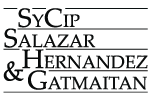Gamboa v. Teves, et al.: Developments in Foreign Ownership Restrictions
The Philippine Supreme Court has issued a decision that may have a significant impact on how local nationality requirements (i.e., constitutional and statutory provisions requiring minimum Filipino ownership in certain industries) must be construed and applied. Enterprises such as telecommunications, media, advertising and land ownership are subject to such nationality requirements.
The case of Gamboa v. Teves, et al. (G.R. No. 176579, 28 June 2011) involved a petition that questioned foreign ownership levels in the common shares of Philippine Long Distance Telephone Company, a corporation engaged in telecommunications and therefore covered by Article XII, Section 11 of the Constitutional; this provision imposes a 40% equity cap on the foreign ownership in the “capital” of public utilities. It has been PLDT’s position that the term “capital” refers to the outstanding capital stock, such that foreigners can own more than 40% of a corporation’s voting shares for as long as foreign ownership of total outstanding shares (i.e., voting and non-voting shares) do not exceed 40%. PLDT’s capital structure pre-Gamboa decision reflected this position.
The Supreme Court held that the term “capital,” as used in the article “refers only to shares of stock entitled to vote in the election of directors.” The ruling in Gamboa also contained statements, which, while arguably obiter dicta, may, if implemented, further restrict possible foreign interest in nationalized and partly-nationalized industries. These include a statement that the 60-40 Filipino-foreign ownership requirement “must apply separately to each class of shares, whether common preferred non-voting, preferred voting, or any other class of shares.”
The Philippine Securities and Exchange Commission is in the process of drafting a circular intended to set out foreign investment guidelines that are...
Read the rest of the article by downloading the Technology, Media & Telecoms Legal Bulletin (Jan. 2013) from the SyCipLaw website.


 Post a comment
Post a comment Print article
Print article

